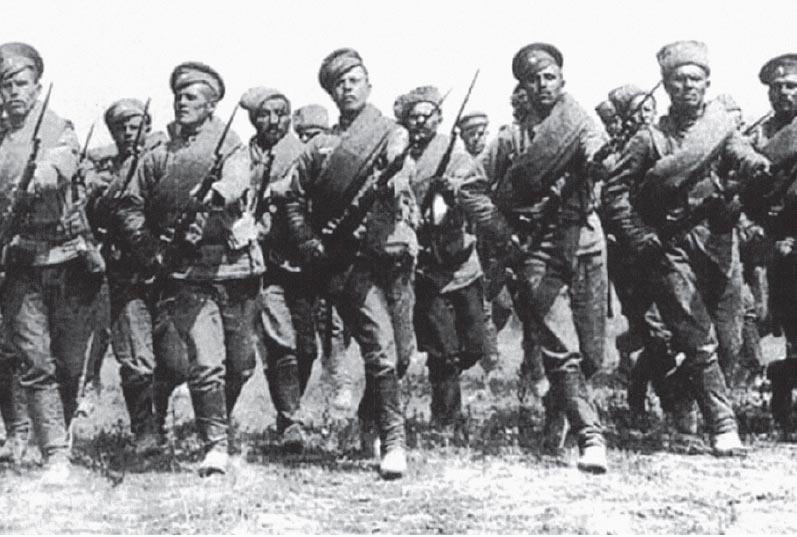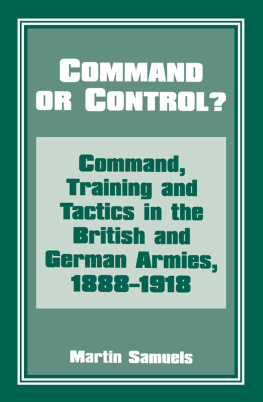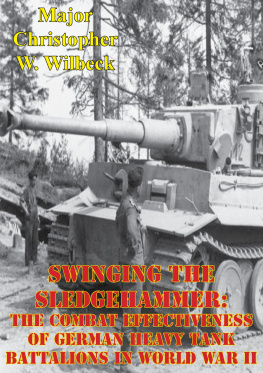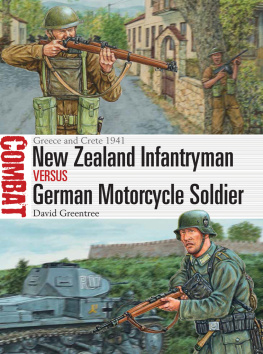
CONTENTS
Introduction
This study examines the contest between German and Russian infantrymen in the opening six months of World War I on the Eastern Front primarily through the lens of the Russian 27th Infantry Division (27-ya Pekhotnaya Diviziya) and their German opponents in three early actions. Although the German superiority at the operational level of warfare has been discussed in a number of works, the tactical dynamics of the Eastern Front in World War I have generally received little attention in English-language historiography. Both armies were overwhelmingly composed of infantrymen, although the artillery provided essential fire support. Other branches, such as the engineers, played a lesser role; cavalry was in tactical decline due to the advent of the machine gun; and aviation was still too primitive in 1914 to influence ground combat. Tactically, at regimental level and below, there was little to distinguish between the two sides infantry. The opposing foot-soldiers were armed with rifles and machine guns that were roughly comparable in terms of quality, and their tactical organizations were also quite similar. Leadership and training were important factors, but the notion that German infantry were always superior to their Russian opponents in these areas has become an entrenched over-simplification. While operational manoeuvring would set the stage for the campaign in East Prussia in 1914, the outcome would be determined at the tactical level by the clash of German and Russian infantrymen.

German infantry in the attack, East Prussia, August 1914. Note that these German troops are more dispersed since they are under artillery fire which does not appear to be all that effective. (Scherl / SZ Photo)

One day after the German declaration of war on Russia, Generaloberst Maximilian von Prittwitz (18481917) took command of 8. Armee, at its headquarters at Bartenstein (now Bartoszyce), 50km south of Knigsberg (now Kaliningrad). Primarily an administrator and staff officer who was ill-suited for either independent command or leading outnumbered forces in toe-to-toe combat against a superior foe, the 65-year-old Prittwitzs only combat experience was as a junior officer against the Austrians in 1866 and the French in 187071, but he was a successful courtier who managed to secure an army command. (TopFoto)
In response to the Austro-Hungarian mobilization against Serbia, due to the crisis brought on by the assassination of the Archduke Franz Ferdinand, Russia initiated General Mobilization on 31 July 1914. The next day, 1 August, Imperial Germany declared war on Russia. Since the German leadership decided to make their main effort in the West against France, the Groer Generalstab (General Staff) deployed only a single army Generaloberst Maximilian von Prittwitzs 8. Armee, possessing 218,000 troops once fully mobilized to defend East Prussia. When Prittwitz took command on 2 August, 8. Armee consisted of three corps of the Stehendes Heer (Standing Army): I., XVII. and XX. Armeekorps. After mobilization began, it was reinforced with I. Reservekorps, the Landwehrkorps, one independent Reserve division and one cavalry division. Thus, Prittwitz had a total of 57 infantry regiments to defend East Prussia, of which 25 were Stehendes Heer, 12 Reserve and 20 Landwehr (Territorial Army). There were also four Jger-Bataillone, one per corps.

Russian infantry in training, advancing with bayonets charged. Russian tactical doctrine still enjoyed a preference for shock action with cold steel, which the Germans had moved away from in favour of fire tactics. (Author)
Consequently, the German military leadership adopted a winholdwin strategy for the Eastern Front, with the mission of 8. Armee simply to hold off the more numerous Russian armies until the campaign in the West was decided and reinforcements could arrive to mount a counter-offensive. This would be no small undertaking and the Germans were rightly concerned that Russian mass the infamous steamroller might overwhelm 8. Armee if given time. Yet the German leadership knew that Russia would commit two-thirds of its forces against the Austro-Hungarian Army in Galicia and that it would take Russia about 60 days after the beginning of General Mobilization to mobilize some 70 infantry divisions. Under these conditions, the Groer Generalstab assessed that it was unlikely that the Russian Army could mount a serious offensive into East Prussia in the first month after the outbreak of war, but that 8. Armee would be hard-pressed by the second month of the war. Thus by design, the German effort on the Eastern Front for the first few months of World War I was a calculated risk, with German forces heavily outnumbered by their Russian opponents and forced to play for time.

General ot kavalerii Yakov G. Zhilinski (18531918) would be unable effectively to coordinate or sustain the operations of First and Second armies. Instead, 8. Armee would be allowed to fight one Russian army at a time; much the same would occur at army level, where individual Russian corps were poorly coordinated. Lack of effective command and control would reduce the Russian steamroller to a series of piecemeal efforts from the beginning. (TopFoto)
Yet the German Groer Generalstab was unaware that General ot kavalerii Yakov G. Zhilinski, Chief of the Russian General Staff (Glavny Shtab), had assured the French Gnral Joseph Joffre in joint discussions prior to the war that the Russian Army would mount an offensive into East Prussia within 15 days after General Mobilization was declared. It was a foolhardy promise but once war was declared, the Russians felt honour-bound to act upon it. While a hasty offensive would exact a cost in terms of logistical sustainment for the campaigns opening phase, the Russians had sufficient active-duty forces in the region that they felt they could mount a come-as-you-are operation and trust to superior numbers to carry the day. This Russian decision to mount a quick thrust into East Prussia from both Lithuania and Poland placed 8. Armee in greater peril earlier than the Groer Generalstab had anticipated. On the other hand, the Russian General Staff decided to place the main offensive emphasis against the Austro-Hungarians in Galicia and halved the forces to be employed against East Prussia from four down to just two armies.

A young soldier of Reserve-Infanterie-Regiment Nr. 12, a Brandenburg formation that initially fought in the West before being transferred to the East in December 1914. (S. J. Perry Collection)
Russias First Army, stationed in Lithuania and commanded by General ot kavalerii Pavel K. von Rennenkampf (18541918), was best positioned to mount a rapid assault into East Prussia on short notice. Initially, First Army consisted of just three active corps (3rd, 4th and 20th), along with a separate infantry division and five cavalry divisions, but on 22 August 2nd Corps was transferred from Second Army to Rennenkampfs First Army. Altogether, First Army started the invasion of East Prussia with 40 infantry regiments, making it slightly smaller than 8. Armee. However, the
Next page


















